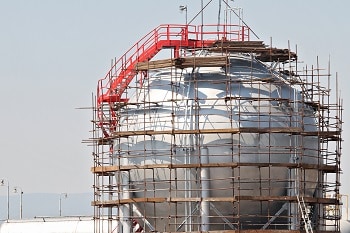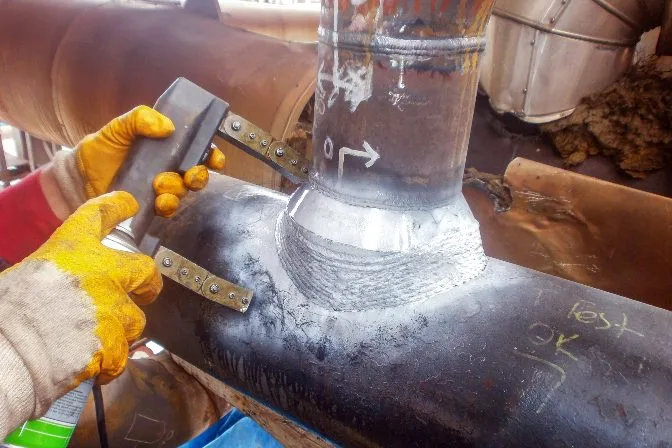A Detailed Summary of Container Welding Evaluation Specifications and Methodologies for Improved Weld Quality and Performance
The value of welding inspection requirements in the production of tanks can not be overstated, as they act as the foundation for guaranteeing weld stability and functional reliability. Different assessment strategies, including visual evaluations and progressed non-destructive screening methods, are vital in recognizing possible flaws that might jeopardize efficiency. Sticking to regulative criteria not just boosts weld top quality yet also mitigates the risk of costly failures. As we explore the nuances of these approaches, it ends up being necessary to take into consideration just how an organized strategy can change existing techniques and bring about significant renovations in end results.
Significance of Welding Inspection Requirements

Welding examination standards incorporate a range of standards, including product specifications, welding procedures, and credentials of workers included in the welding process. By enforcing these criteria, organizations can systematically determine and fix potential flaws, thereby minimizing the likelihood of expensive fixings or catastrophic failures. Extensive evaluation techniques cultivate a culture of responsibility and accuracy, urging welders to maintain high levels of craftsmanship.

Typical Welding Assessment Techniques


Ultrasonic Testing (UT) is an additional widespread method, using high-frequency sound waves to detect inner imperfections that might not show up externally. This approach is especially efficient for identifying gaps or additions within the weld metal. Magnetic Particle Examining (MT) is likewise widely made use of, particularly for ferromagnetic materials, as it discloses surface area and near-surface defects via the application of electromagnetic fields and ferrous particles.
In Addition, Liquid Penetrant Testing (PT) identifies surface-breaking flaws by applying a penetrant to the weld and after that utilizing a programmer to attract out the penetrant. Each of these techniques adds to an extensive evaluation approach, making sure that welds meet the rigorous high quality standards needed in tank building.
Regulatory Specifications and Compliance
Regulative standards and conformity are essential elements in ensuring the security and reliability of welded frameworks in tank building - Tank Welding Inspection. These standards serve to develop minimum requirements for material properties, welding procedures, and examination practices, consequently reducing the risk of architectural failings and enhancing general efficiency
Key organizations, such as the American Culture of Mechanical Designers (ASME) and the American Welding Society (AWS), offer standards that are extensively adopted in the market. Conformity with these criteria not only guarantees adherence to finest techniques but also satisfies lawful and legal obligations, protecting the rate of interests of stakeholders.
Governing bodies often mandate adherence to particular codes, such as ASME Code Section IX for welding credentials and API 650 for bonded containers. These codes outline requirements for welding methods, qualifications of workers, and screening approaches to validate weld stability.
Routine audits and assessments are essential to maintaining compliance, as they help identify deviations from established standards. Non-compliance can result in significant fines, project hold-ups, and safety and security threats. Therefore, a robust understanding of regulative requirements and a commitment to compliance are paramount in achieving premium and long lasting welded storage tank structures.
Non-Destructive Evaluating Methods
How can the integrity of bonded structures be guaranteed without causing damage? Non-destructive screening (NDT) approaches offer a durable option, making it possible for examiners to assess weld quality without compromising the product - Tank Welding Inspection. Amongst the most common NDT read more strategies are ultrasonic screening (UT), radiographic testing (RT), magnetic particle screening (MT), and color penetrant testing (PT)
Ultrasonic testing uses high-frequency audio waves to discover internal imperfections and identify material residential or commercial properties. It provides specific dimensions and is particularly reliable for thick products. Radiographic testing entails passing X-rays or gamma rays with the weld, creating photos that expose architectural flaws such as cracks or gaps. This technique is important for evaluating the honesty of complicated welds.
Magnetic bit testing is matched for ferromagnetic products, where electromagnetic fields reveal surface and near-surface interruptions. Dye penetrant screening utilizes a liquid color to highlight surface-breaking imperfections, making it an efficient method for non-porous materials.
Each of these NDT methods has distinctive benefits, permitting comprehensive analyses tailored to specific products and welding procedures. By applying these techniques, markets can make sure the reliability and security of bonded structures, inevitably why not look here improving total efficiency.
Enhancing Weld Quality With Inspection
Efficient evaluation plays an essential duty in improving weld high quality, working as a crucial checkpoint in the construction process. By identifying potential flaws early, inspections alleviate the danger of jeopardized architectural honesty and ensure compliance with sector requirements. Employing a combination of aesthetic evaluations, non-destructive testing (NDT) approaches, and mechanical assessments, examiners can discover problems such company website as porosity, fractures, and incomplete fusion.
Executing a durable inspection procedure not just boosts the overall top quality of welds but likewise cultivates a society of liability among welders and makers. Routine training and accreditation of examination employees guarantee that they are equipped with the essential abilities to identify and deal with possible issues properly. This proactive approach lessens rework and associated costs, inevitably adding to project performance.
In addition, thorough documents of evaluation searchings for supplies valuable insights into reoccuring concerns, promoting continuous improvement in welding methods. By leveraging innovative technologies, such as automated ultrasonic screening or digital radiography, weld high quality can be improved through much more accurate analyses. Finally, an extensive assessment procedure is essential in attaining top quality welds, ensuring safety and security, integrity, and long life in storage tank manufacture.
Conclusion
In final thought, the application of rigorous container welding assessment criteria and techniques is vital for guaranteeing weld stability and efficiency. By using a combination of aesthetic inspections, non-destructive screening approaches, and adherence to regulatory criteria, organizations can successfully recognize and alleviate possible flaws.